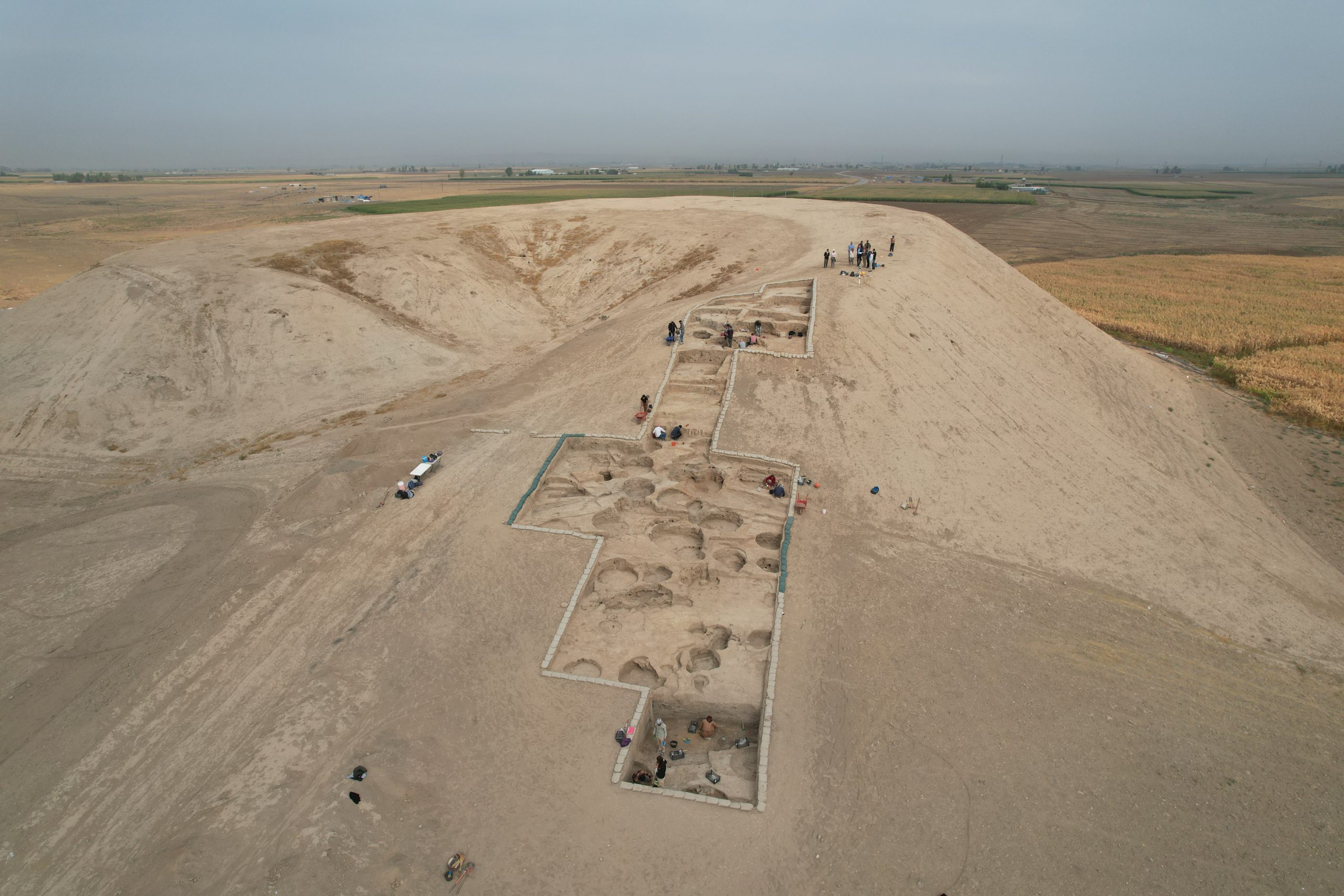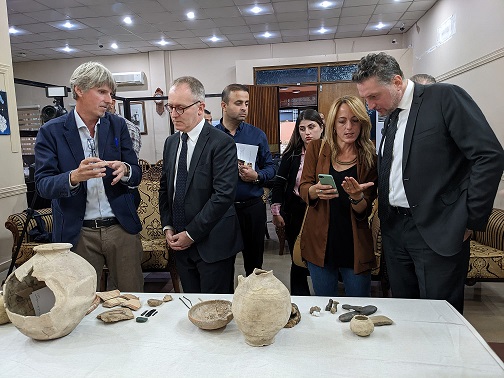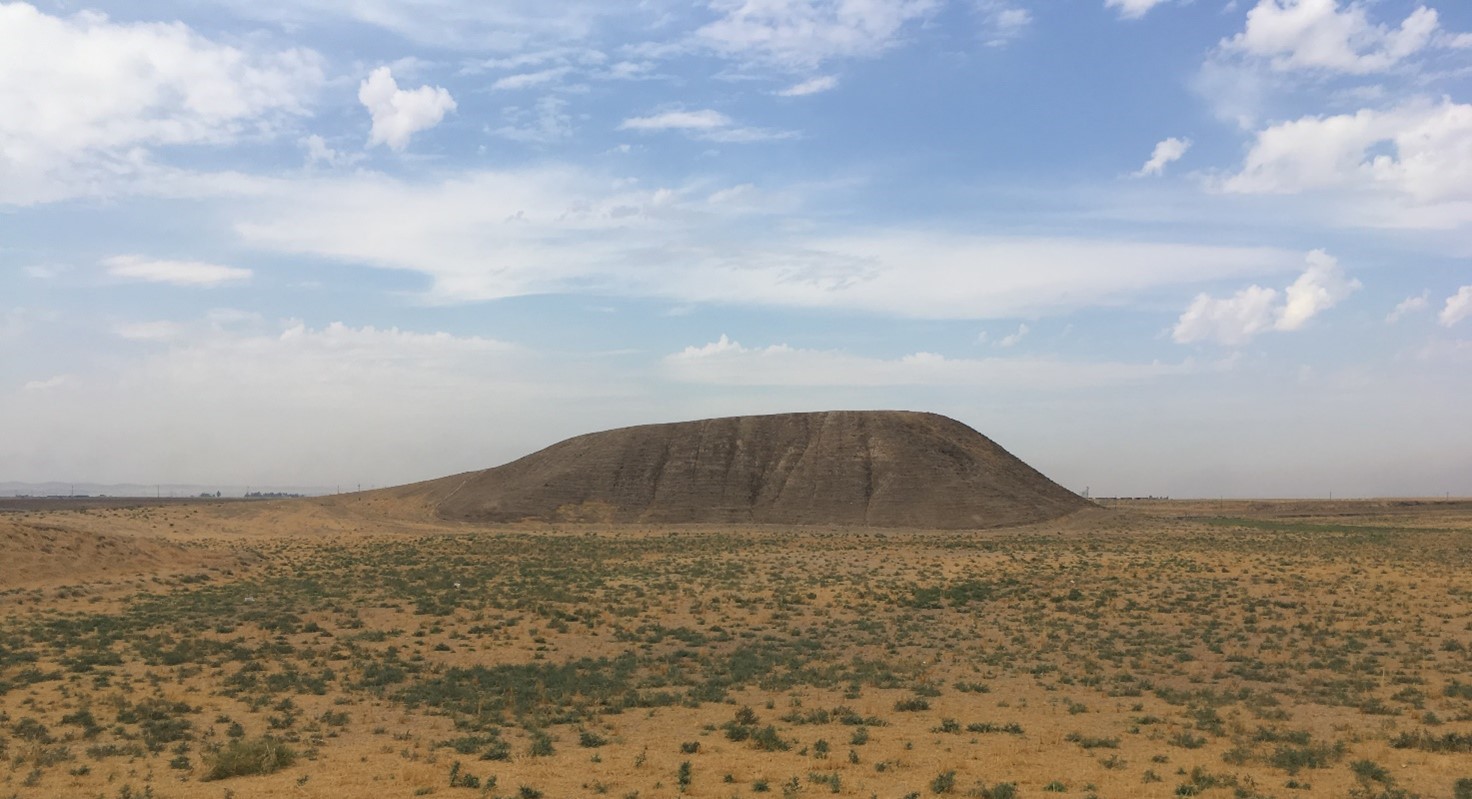A summary of the results of the Archaeological Mission of the University of Milan.

Italian discoveries in Iraqi Kurdistan

The Italian Archaeological Expedition in the Erbil Plain (Iraqi Kurdistan) of the University of Milan has concluded its field campaign for 2022. It featured more than a month of research and all-round investigations at the Helawa and Aliawa sites, conducted by an interdisciplinary group led by Prof. Luca Peyronel, professor of Archeology and Art History of the Ancient Near East at the State University of Milan. The project is co-financed by the Italian Ministry of Foreign Affairs and International Cooperation.
The obtained results turned out to be of extraordinary interest for the reconstruction of the ancient history of the region, from the Neolithic to the medieval era. The two sites have in fact a very long occupation, which goes from the prehistoric phases, datable between the 7th and 6th millennium BC (Halaf and Ubaid periods), to the development of the first complex societies and urban centers in the 5th and 3rd millennium BC (Late Chalcolithic and Early Bronzem Age periods), to the formation of regional political systems and large supra-national empires in the 2nd and 1st millennium BC, until the Seleucid and Parthian periods and the advent of Islam. The sites represent a privileged vantage point, which has allowed archaeologists to work on very different contexts and periods, through the succession of various chronological and occupational phases, the overlapping of which has led to the transformation of the two centers into artificial hills (tell), more than 22 meters high on the surrounding plain.
To investigate settlements of such complexity, the Unimi team combined data from surface surveys and from the field excavation, the information gathered by drone and GPS remote sensing, the results of micro-stratigraphic and geo-archaeological analyses, and the information coming from the study of human, animal and plant remains.
In Helawa, the investigations have concentrated on the most ancient phases, bringing to light a series of circular dwelling structures (tholoi) from the Halaf period with hearths, ovens and installations, associated with the typical polychrome painted ceramic of this cultural phase, and a subsequent building with adobe walls formed by small quadrangular rooms and larger rectangular rooms – probably a large house, dated to the end of the 6th millennium BC (Ubaid period). The rooms of the latter building were equipped with various types of installations and inside them numerous flint tools, pestles and stone and ceramic smoothers with the characteristic monochrome painted decoration have been recovered. This discovery is of the great interest for the reconstruction of a crucial period of development of farming communities in northern Mesopotamia, documented for the first time in a stratigraphy in the plain of Erbil.
In the Aliawa site, which is characterized by a very long and uninterrupted sequence of occupations from the protohistoric period up to the Islamic era, three different areas have been excavated: in the highest part of the site (Area B), at the base of the southern slope (Area A) and in the lower city (Soundings C and D).
In Area B, a sector of an imposing building from the Hellenistic period (4th century BC) was brought to light, probably connected to a defensive bastion of a fortified military center. Noteworthy was the discovery of a silver tetradrachm of Alexander the Great, a coinage that spread throughout the vast Macedonian empire, characterized by the effigy of the sovereign as Hercules (with the skin of the Nemean lion) on one side and the image of Zeus on the other.
A vast area for the large-scale manufacture of pottery, datable to the Akkadian Period (last centuries of the 3rd millennium BC) occupies almost the entire extent of Area A. Already identified in 2021, it has been explored in detail, through an in-depth analysis of the “archeology of production”. The limits of this complex, which currently covers over 300 square meters, are not yet known. More than fifty kilns for producing pots have been identified and excavated: they are built on three different terraces and connected by brick platforms. The furnaces show sophisticated systems for the diffusion of gas and heat, through horizontal ducts and vertical chimneys, with the combustion chambers found still full of ash and the cooking chambers partially collapsed with the pottery still inside, positioned for the cooking. The level of conservation is extraordinary and in all of northern Mesopotamia only one other comparable case of production atelier of this kind is known.
Underneath this layer, the most ancient occupation has been finally reached, and it is referable to the so-called Ninevite 5 Period (first half of the 3rd millennium BC). Some circular silos have emerged for the storage of agricultural products, mainly barley and wheat, and in the deposits rich in plant remains dozens of cretulae have been found (clumps of clay affixed to the containers that preserved the foodstuffs), with impressions of cylindrical seals. It was therefore an area intended for the centralized control of resources by the administration of a political entity that still needs to be clearly defined.
Middle and Late Bronze Age Aliawa (2000-1200 BC) must have been a large center of 30 hectares, probably linked to its economic role in manufacturing production. In this regard, the surveys carried out in the lower city (Area C and D) have provided evidence to support this hypothesis, through the discovery of furnaces, canals for water drainage and many associated materials.
The primary role of the University of Milan’s research in the region was underlined at the end of the excavation campaign by the visit of the Italian Ambassador to Iraq, Maurizio Greganti, and the Italian Consul in Erbil, Michele Camerota. Afterwards, the Ambassador reached the Museum of Civilizations in Erbil, where the press conference was held. Today’s results of the Mission, launched in 2016, open new and interesting perspectives for understanding the prehistoric and historical reality in the Erbil Plain.













